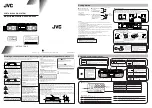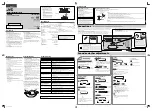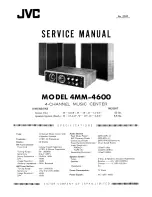
CAUTIONS AND TROUBLESHOOTING
Feedback
Observe care in selecting P.A. volume, transmitter location and speaker placement so that the
acoustic feedback (howling and screeching) will be avoided. Please also note the pickup pattern
characteristics of the microphone selected. Omni directional mics pick up sound equally from all
direction, and are prone to feedback if not used carefully. Unidirectional mics are more resistant to
feedback. However, pick up sound source best that are directly in front of the mic. Also mics that
are farther from the sound source, such as lavalier, required more acoustic gain and thus are also
more prone to feed back than close-source mics such as handheld or headworn models that are
used close to the mouth.
microphone damage
Headset and lavalier mic users, note that the microphone element can easily be destroyed by the
buildup of salts and minerals from perspiration and saliva. It is good practice to put a windscreen on
the mic at all time to protect it.
no Audio
If you not getting audio through the system, carefully recheck all setup procedures. The receiver
and transmitter must be on the same RF channel (frequency).
RF Interference
If you encounter receiving interference (from other than an operating TV station), often it can
be overcome by adjusting the receiver ‘s MUTE (squelch) control. Please note that wireless
frequencies are shared with other radio services. According to FCC regulations, wireless
microphone operations are unprotected from interference from other licensed operations in the
band. If any interference is received by any Government or non-government operation, the wireless
microphone must be cease operation or change frequencies. The above statement is valid only for
use in the U.S.A.
11


































